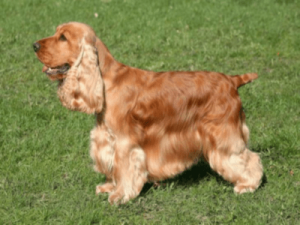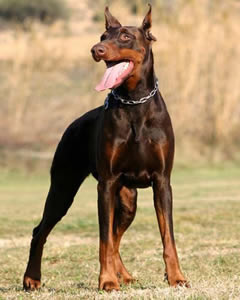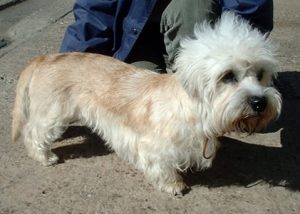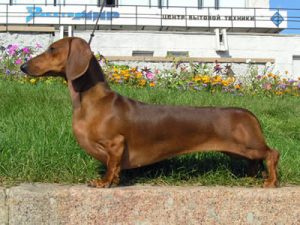
The English Cocker Spaniel is a breed of gun dog. The English Cocker Spaniel is an active, good-natured, sporting dog, standing well up at the withers and compactly built. There are “field” or “working” cockers and “show” cockers. It is one of several varieties of spaniel and somewhat resembles its American cousin, the American Cocker Spaniel, although it is closer to the working-dog form of the Field Spaniel and the Springer Spaniel.
Outside the US, the breed is usually known simply as the Cocker Spaniel, as is the American Cocker Spaniel within the US. Due to the breed’s happy disposition and continuously wagging tail, it has been given the cute nickname “merry cocker”. They can be also dominant and loyal to their companion. Their health issues are typical for a purebred dog breed; however they are closely associated with rage syndrome even though cases are really quite rare. The word cocker is commonly held to stem from their use to hunt woodcock
Colour
Breed standards restrict dogs to certain colours for the purposes of conformation showing (dependent on country), whereas working Cockers can be any of a wide variety of colours. For instance, the breed standard of the United Kingdom’s Kennel Club states that in solid colours, no white is allowed except for on the chest.
They come in solid (or “self”, particular colour, and roan types of markings. The colours themselves in the breed consist of black, liver with brown pigmentation, red with black or brown pigmentation, golden with black or brown pigmentation, sable, silver, ash, black and tan, liver and tan, blue roan, liver roan, orange roan with black or brown pigmentation, lemon roan with black or brown pigmentation, black and white ticked, liver and white ticked, orange and white ticked with black or brown pigmentation, lemon and white ticked with black or brown pigmentation, black and white, liver and white with brown pigmentation, orange and white with black or brown pigmentation, lemon and white with black or brown pigmentation. Of the solid colours, sable is considered rare, and is classified by some countries as being a type of particolour on account of its mixed hair shafts. White is black/brown pigmentation is also considered rare, and is also usually classified as a particolour too. In addition a silver/ash colour, usually associated with the Weimaraner breed of dog, is considered genetically possible but is yet to be recorded by the United Kingdom’s Kennel Club. Of the roan varieties, lemon roan with a light brown pigmentation is the most recessive of all the roans. Plain white Cockers are rarely born, and are thought to be more prone to deafness than those with more pigmentation. As such they are generally not encouraged in the breed.
Temperament
The English Cocker Spaniel can be stubborn, but can be easily trained and make a good medium-sized family pet. The breed does not like being alone, and will bond strongly to an individual person in a family. Known for optimism, intelligence and adaptability, the breed is extremely loyal and affectionate. They rank 18th in Stanley Coren’s The Intelligence of Dogs, being of excellent working/obedience intelligence.
A link between coat colour and temperament has been proposed. This link could be the colour pigment melanin, which is biochemically similar to chemicals that act as transmitters in the brain. A study made by the University of Cambridge involving over 1,000 Cocker Spaniel households throughout Britain concluded that solid colour Cockers were more likely to be aggressive in 12 out of 13 situations. Red/golden Cockers were shown to be the most aggressive of all, in situations involving strangers, family members, while being disciplined, and sometimes for no apparent reason. A study by Spanish researchers at the Autonomous University of Barcelona revealed a similar link between golden Cockers and aggression. Males were also more likely to be aggressive. The study found the English Cocker Spaniel to have the highest level of owner- and stranger- directed aggression compared to other breeds.
Rage Syndrome
Rage Syndrome is described as when a dog attacks suddenly and savagely, without any warning and during the attack the dog often has a glazed look and appears to be unaware of its surroundings. Studies have found it is more common in solid coloured Cockers than in particolours and also more common in darker coloured Cockers than lighter coloured Cockers, being most common in solid orange and black coloured spaniels. Male orange spaniels are not recommended as a family pet and should never be left alone with children. Rage syndrome is most often associated with the Show Cocker Spaniel breed, although cases have been found in other breeds and cases are relatively rare even within the Cocker Spaniel breed. Rage syndrome cannot be accurately predicted and can only be diagnosed by EEG or genetic testing and these tests are not conclusive.
—————————————————————————————————————–
CARING FOR YOUR DOG NEWSLETTER – Delivered Directly To Your Inbox – Starting Immediately – SIGN UP FOR FREE TODAY
—————————————————————————————————————–




